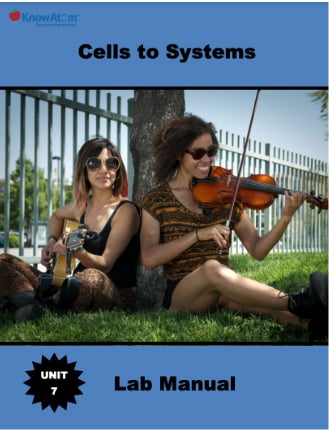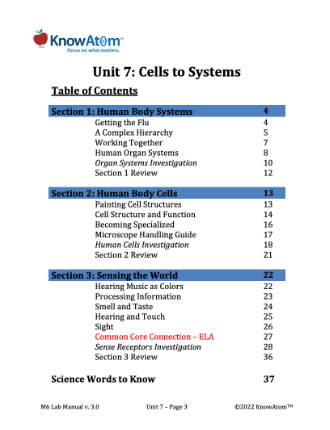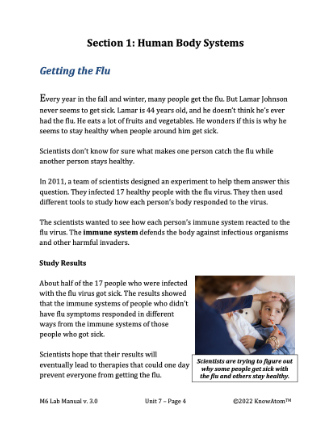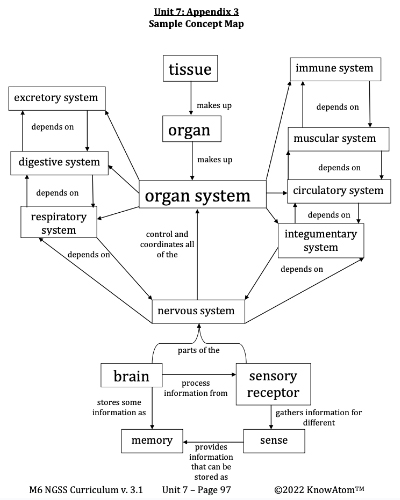Painting Cell Structures
David Goodsell is a scientist. He is also an artist. He has combined his love of cells and art to create watercolor paintings of different cells. His work is unique because it shows the molecules that make up the different parts of each cell. These molecules are so tiny that they cannot be seen with just a microscope.
David’s paintings usually represent cellular structures magnified one million times. This is the magnification necessary to see the different molecules that make up the cell.
David uses information from several different tools to help him create his paintings. He sometimes spends weeks researching a molecule before he draws it.
Understanding the structure of cells and the molecules that make them up is important for scientists like David who study cells. “It’s like understanding any piece of machinery,” David said in an interview with the California museum Exploratorium. “You have to know what it looks like and how its different parts interact with other parts, the other molecules.”
Variety of Human Body Cells
Remember that the human body is made up of trillions of cells. There are 200 kinds of specialized cells. Each kind of cell is structured in such a way that it can perform a particular job.
Muscle cells have a very different structure from red blood cells. This is because muscle cells have a different function. Every process that requires movement in your body occurs because of the 700 muscles that make up the muscular system. Muscles always work in pairs. As one muscle contracts (shortens), its pair relaxes (lengthens). A muscle is a tissue made up of many cells called fibers. Muscle fibers are long and thin, which allows the cells to change size drastically when they contract and relax. They have a lot of mitochondria, which provide a constant supply of energy to the cells during movement. There are three kinds of muscle tissue: skeletal, cardiac, and smooth.
- Cardiac muscle cells are only found in the heart. Cardiac muscle tissue is involuntary. This means it contracts without conscious control. It is strong because it is responsible for pumping blood throughout the body.
- Smooth tissue is involuntary tissue that lines the inside of organs like the stomach, intestines, and blood vessels. It is much shorter than the skeletal tissue. It has a smooth, uniform appearance when viewed under the microscope. cardiac muscle cells
- Skeletal muscle cells move parts of the bone closer to each other. Skeletal muscle tissue is the only voluntary muscle tissue in the body. These cells are long. They are made up of many long fibers that can contract and relax with great force.
Skin Cells
Skin cells are different from both red blood cells and muscle cells. They are part of the integumentary system. They work to protect the body by providing a tough physical barrier. Skin is actually the body’s largest organ. It is made up of different layers of cells that work to protect your body.
Becoming Specialized
Red blood cells, muscle cells, skin cells, and all of the other cells that make up a human came from a single cell that formed when an egg cell from a female and a sperm cell from a male joined together. That single cell contains a full set of genetic information. That single cell begins to reproduce. It develops into a type of cell called a stem cell.
Stem cells are unspecialized. This means they cannot perform the specific functions of the body. Instead, their primary job is to create specialized cells that have specific structures for carrying out different functions. This process of forming specialized cells is called cell differentiation. During cell differentiation, cells develop the specific shapes, structures, and characteristics they will need to perform their specific function in the body. Scientists still don’t know exactly what causes a stem cell to turn into a specialized cell.
When a stem cell divides, each new cell can become another type of cell with a more specialized function. In embryos, cell differentiation happens depending on where the stem cell is located. For example, those stem cells on the outer layer of the embryo form skin cells. Cell differentiation is how a single cell can become a complex organism like a human being, made up of trillions of specialized cells.








